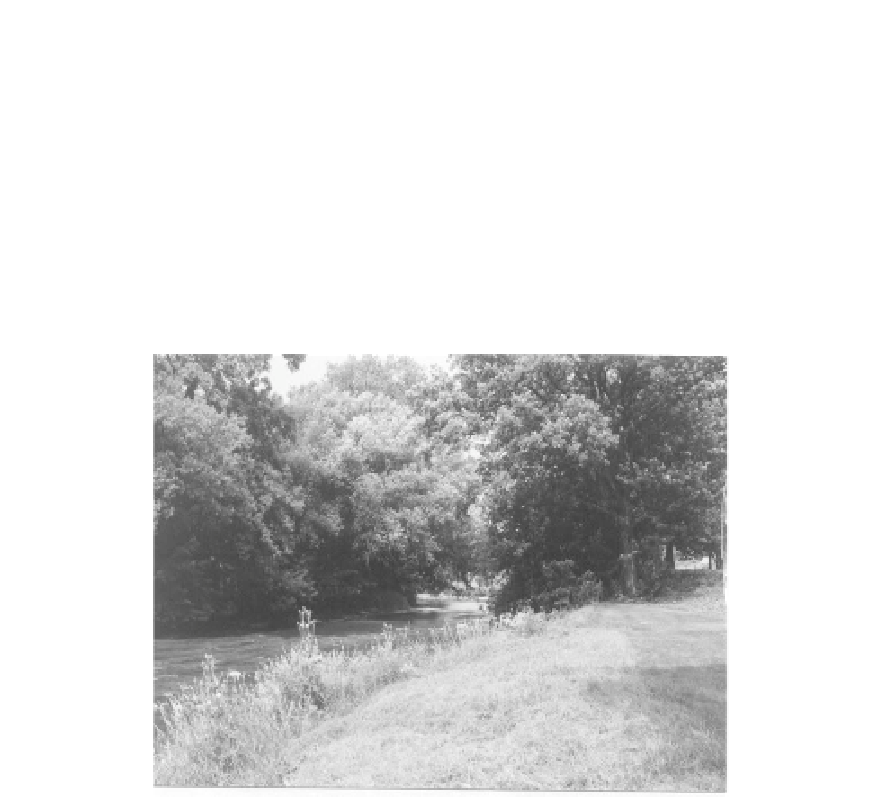Environmental Engineering Reference
In-Depth Information
reaches. The level of the channel shelf along many perennial streams approximates the level of the mean
annual discharge. Floodplains (Fig. 2.51, Table 2.3) are the flat surfaces that are flooded, on average, once
per 1-3 years. The water elevation just necessary to reach the floodplain is termed bankfull stage. Terraces
may occur for a number of reasons (Howard et al., 1968), however, most represent former floodplains
and may be at various levels above the modern floodplain (Fig. 2.51, Table 2.3). Channel incision
typically renders once active floodplains to terraces through degradation. The likelihood of terrace
inundation is always less than that of the floodplain, with the frequency of terrace inundation less than
once every 3 years.
Figure 2.52 shows the riparian vegetation by a small river in the U.S. The roots of the riparian forest
increase the roughness and reduce bank erosion.
Fig. 2.52
Riparian forest by a small river in the U.S. The roots of the riparian forest increase the roughness and
reduce bank erosion
Research in forested areas over the past two decades has shown lLWD in and along the channel to be
an important element of fluvial-geomorphic form and process. Most streams, even those in semi-arid
environments, naturally support woody riparian vegetation. Meandering, avulsion, braiding, and changes
in channel width along forested, low-gradient channels may be controlled at least in part by LWD. LWD
may buttress portions of the channel slowing flow in the lee of the obstruction, thus enhancing sediment
deposition (Osterkamp and Costa, 1987).
2.4.2
Role of Vegetation in Fluvial Process
2.4.2.1
Degradation
Many mountainous streams in China are degrading channels. Even for those that have achieved equilibrium
many causes may induce channel degradation or aggradation. Any natural or human induced causes that
change the channel gradient or supply of sediment from the drainage basin in an equilibrated fluvial
system may cause channel aggradation or degradation. Woody riparian vegetation typically does not
become established on the active channel bed of perennial streams (Hupp and Osterkamp, 1985). Thus,
initial bed degradation does not directly affect riparian vegetation. However, as degradation increases
bank heights, the roots of plants growing above the bed may significantly increase bank stability along

Search WWH ::

Custom Search